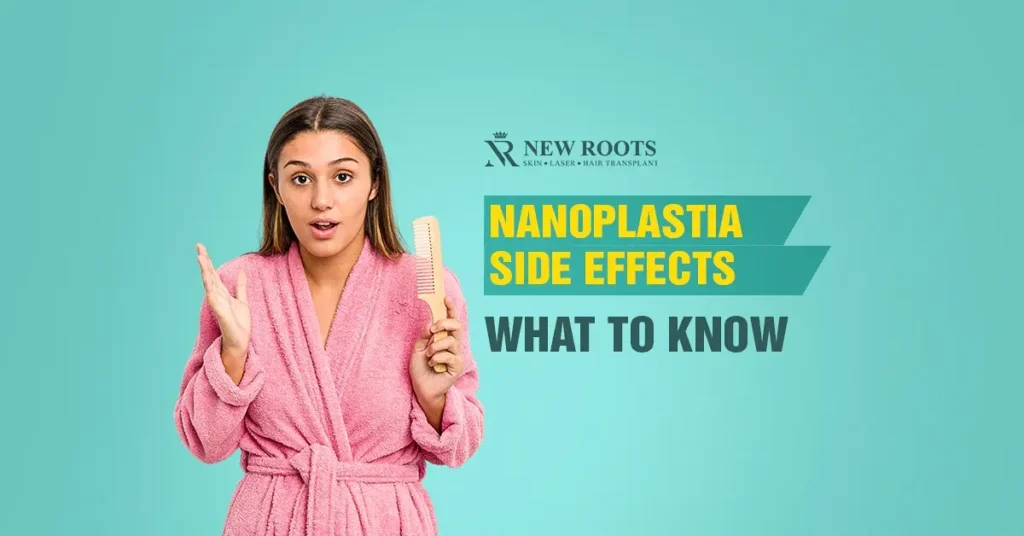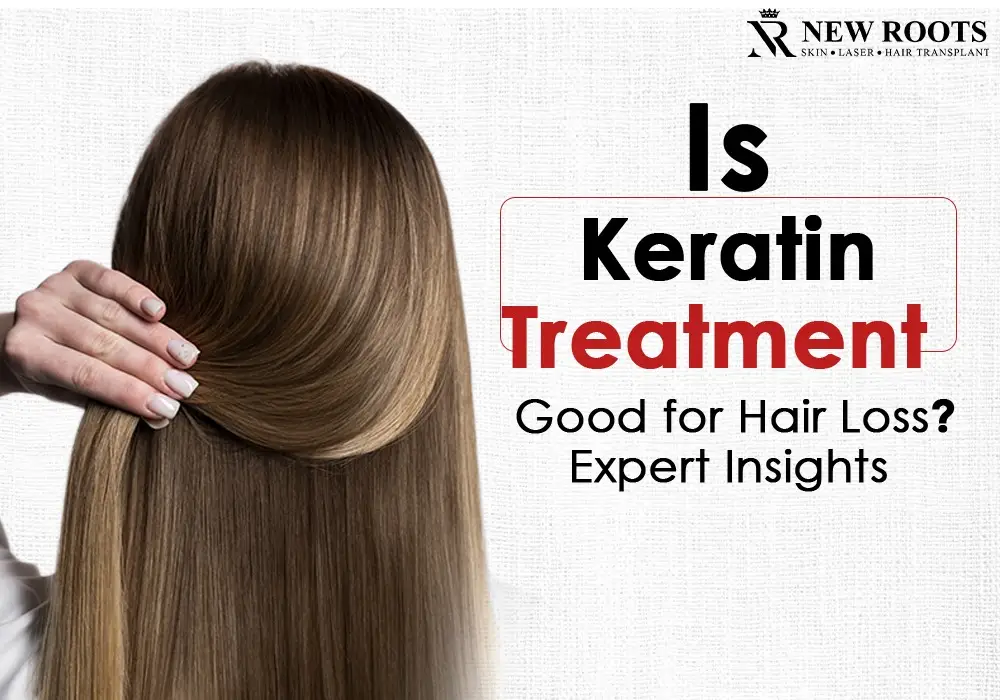The hair care industry claims that nanoplastia enhances smooth, shiny, and frizz-free hair, but it is wise to understand the Nanoplastia hair treatment side effects before trying it.
This guide explains what Nanoplastia is, how it works, and the possible risks of its use, including dryness, scalp irritation, or changes in hair texture.
We’ll walk you through both the short-term and long-term effects so you can make an informed decision.
You’ll also find tips on reducing Nanoplastia hair treatment side effects, maintaining healthy hair, and achieving the best results from this treatment. Be aware, be beautiful—because healthy hair is always in style.
Introduction
Nanoplastia has also been a preference amongst individuals desiring smooth, shiny, and chemically-free hair devoid of frizz.
Although it delivers effective, lasting results, you should be aware of the potential nanoplastia hair treatment side effects before you schedule that appointment.
Nanoplastia, like any hair treatment, can bring minor problems when it comes to your hair type, scalp condition, and subsequent post-care.
A temporary dryness, texture, and other changes: comprehending all these is important to make a wiser choice.
However, there are possible adverse effects of Nanoplastia that we can address in this guide, so you are aware of them and ensure your hair does not suffer.
Table of Contents
Understanding Nanoplastia
👉 1. Definition and Purpose of Nanoplastia
Nanoplastia is a hair-smoothing procedure that claims to minimize frizz, bring on shine, and make hair feel and seem more manageable without the use of any harsh chemicals or formaldehyde.
It is applicable to different kinds of hair, whether a little and well-waved or highly curly. Its primary objective is not only to straighten the hair but also to nourish the hair deeply to give hair strands a silky, soft, and healthy look months after.
In contrast to classical straightening, nanoplastia adheres to improving the health of the hair and providing a sleek effect; thus, it is an option that is desired to achieve lasting smoothness.
👉 2. How It Works: Smoothing Process and Active Ingredients
The nanoplastia process starts by cleansing the hair to get rid of buildup, followed by the application of a formula that is rich in nutrients, including amino acids, collagen, and natural oils.
These active compounds go through the cuticle and fix the damage internally. The treatment is then locked in with heat, usually with a flat iron, to straighten the structure of the hair and have a smoother texture.
Such a nourishing and sealing technology brings about frizz-free, shiny, and soft hair for up to several months.
Possible Side Effects of Nanoplastia Hair Treatment
Even though nanoplastia can leave your hair smooth, glossy, and frizz-free, it is worth keeping in mind that it can result in certain side effects as well, namely in the case when the scalp is sensitive or the procedure of aftercare is not properly adhered to. This is what you need to know:
👉 1. Itching and Scalp Irritation
Mild discomfort or itching on the scalp after the treatment is noticed by some people. This mostly occurs as a result of contact of the active ingredients of the product with the skin. The irritation usually disappears after some days, but when it cannot be removed, one should consider visiting a dermatologist.
👉 2. Allergic Reactions
Nanoplastia may make your skin flush or break out in tiny bumps or swell on your scalp and hairline if you have sensitive skin or allergies previously. This is why it is strongly advised to take a patch test before the procedure to prevent all negative surprises.
👉 3. Hair Dryness and Brittleness
Nanoplastia may dehydrate the hair; despite the fact that it is intended to be used to nourish and smooth it out, atypical or excessive use may remove the existing moisture. This can cause strands to become dry, coarse, or brittle as time goes on because you forego moisture-rich hair masks and conditioners.
👉 4. Changes of Hair Texture
To some, nanoplastia just changes the texture of their hair a bit. Wavy hair or curly hair might have more or less straightness or be less structured. This is positive or negative, according to the eye. This modification normally lasts till the treated hair grows.
👉 5. Hair Breakage and Shedding
The treatment can increase breakage in the case of weak or damaged hair since it uses heat styling, which only harms them. Occasionally, there may be some shedding after the process, a few days later, in rare instances. It is possible to minimize this risk by using strengthening products as part of the treatment.
| Potential Side Effects | Description |
| Scalp Irritation | Mild redness or itchiness on the scalp. |
| Hair Damage | Excessive processing leading to brittleness and breakage. |
| Allergic Reactions | Possible skin irritation caused by ingredients in the treatment. |
| Alteration of Hair Textures | Changes in hair texture can occur, resulting in flatness or limpness. |
| Excessive Dryness | Hair can become dry and unmanageable if not properly treated post-application. |
| Burns on the Scalp | It can occur from poor heat management during treatment. |
| Loss of Hair | Hair can shed from heat exposure or improper aftercare. |
Importance of Professional Stylist Consultation
Getting advice from a professional stylist before going for nanoplastia is important to minimize nanoplastia hair treatment side effects.
During consultation, the stylists have to analyze the hair status, as well as the goals of the service, to set up the type of treatment.
It guarantees that clients benefit from a risk-free process matched to their specific needs to bring about the best outcome.
Results Duration of Nanoplastia Hair Treatment
From the nanoplastia treatments, the results usually last between 3 to 6 months, although it might be determined by upkeep and the type of hair. Maintaining the hair healthier and using sulfate-free products will help in having a treatment longer and is better.
Safer Treatments as Alternatives
Just in case you worry about the side effects of the Nanoplastia hair treatment, you may consider the milder choices and use other products that will help you smooth the hair and make it healthy without the harsh chemicals. Less risky options are the following:
Reduced Frizz: Keratin treatment using a formaldehyde-free formula is less likely to hurt the scalp.
Hair Botox: Richly conditions and makes the hair healthy without altering its original texture to a great extent.
Deep Conditioning Spa Strengths: adding back shine and softness in a natural way.
Hair masks made of oil types such as coconut, argan, or olive oils are DIY treatments.
Care and Hair Repair Post-Treatment
It is necessary to adhere to adequate aftercare in order to retain the results and avoid the consequences of nanoplastia hair treatment. These tips you should follow:
- Sulfate-free shampoo and conditioner- Keeps the hair smooth and does not have to be stripped of its natural oils.
- Use moisturizer regularly -Apply leave-in conditioner and rehydrating masks twice a week.
- Do not use heat styling for at least one week -Assistant prevention of dryness and brittleness.
- Reduce hair washing frequency – Maintains the smoothing effect when the treatment is reduced, which can last longer.
- Protect against the sun and chlorine- Wear a hat, use UV-protection sun sprays.
- Roughness in combing-Be easy when you comb; a wide-tooth comb will prevent breaking.
- Stick to hair oils – Argan, coconut, or jojoba oil hydrates and adds to shine and softness.
- Trim regularly – This stops split ends and promotes healthy hair growth.
Taking these measures will make sure that you receive beautiful outcomes with a low probability of side effects.
New Roots - Skin, Laser & Hair Transplant Clinic: Your Trusted Source
The New Roots Clinic is also known as a reputable organization providing complex hair care and modern technologies.
The clinic is well-known because of its experience and devotion to excellence, and provides individualized solutions based on the needs of a client.
Specializing in hair treatments and therapies using cutting-edge approaches such as Nanoplastia for hair restoration using the latest therapies, each treatment is taken very seriously and carefully.
The team is comprised of talented professionals who will focus on safety, comfort, and long-lasting results.
Attributable to its client satisfaction orientation, as well as utilization of high-quality goods, The New Roots Clinic has become a household name for attaining healthy and beautiful hair.
Conclusion
Thanks to the enhanced knowledge of nanoplastia hair treatment side effects, clients can make better choices when it comes to their hair care.
Though the nanoplastia technique provides enduring and attractive outcomes, it is crucial to discuss possible risks.
Employing the services of competent practitioners and following up with aftercare activities are vital to fulfilling the needed satisfying experience.
Q&A ASK
Common side effects of nanoplastia hair treatment are scalp itchiness, redness, rashes, allergies, dryness of the scalp, hair loss or damage, texture alterations, and messed hair, and rarely scalp burns. These tend to be reliant on scalp sensitivity and post-treatment care.
To avoid getting side effects from nanoplastia hair treatment, choose a specialized stylist, find a professional who offers nanoplastia hair treatment, and get a skin test before the treatment. Wash hair using sulfate-free products only and refrain from using a hairdryer for the next few days.
Minor side effects of nanoplastia hair treatment are generally expected to be nonpermanent and usually require no intervention. But if damage is caused to hair or scalp, it may cause those mild problems to persist for quite a long time; hence the importance of following aftercare procedures and visiting the stylist if complications are noticed immediately.
Indeed, there are natural hair treatment measures that can help ease the side effects of nanoplastia hair treatment on the body. They are natural hair remedies, not like some hair treatments such as nanoplastia, which have apparent side effects associated with it, hence hair Botox.
Some of the symptoms one may experience from nanoplastia hair treatment side effects include symptoms such as redness or even itching on the scalp, dry and brittle hair, or sometimes a different texture altogether. In case you have any of the symptoms given below after the treatment, it is advisable to seek the services of a professional stylist to give you a professional checkup of your situation.





